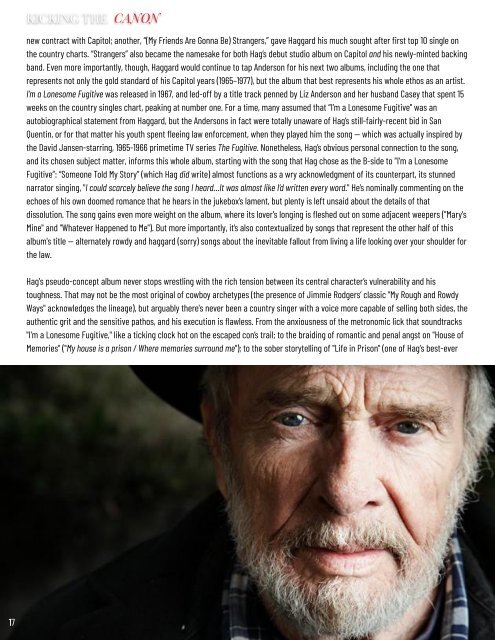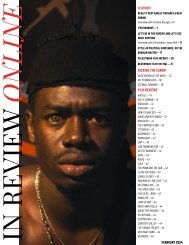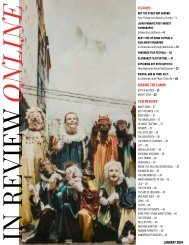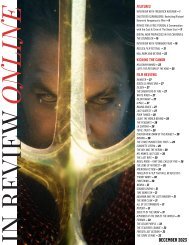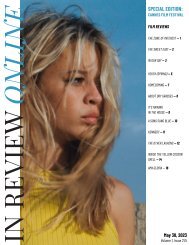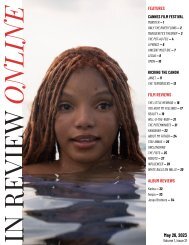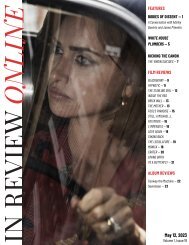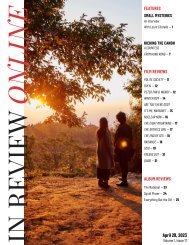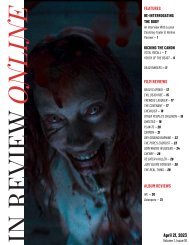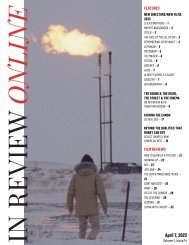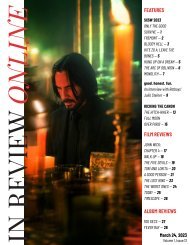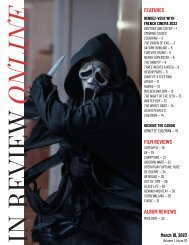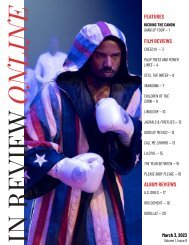You also want an ePaper? Increase the reach of your titles
YUMPU automatically turns print PDFs into web optimized ePapers that Google loves.
KICKING THE CANON<br />
new contract with Capitol; another, “(My Friends Are Gonna Be) Strangers,” gave Haggard his much sought after first top 10 single on<br />
the country charts. “Strangers” also became the namesake for both Hag’s debut studio album on Capitol and his newly-minted backing<br />
band. Even more importantly, though, Haggard would continue to tap Anderson for his next two albums, including the one that<br />
represents not only the gold standard of his Capitol years (1965–1977), but the album that best represents his whole ethos as an artist.<br />
I’m a Lonesome Fugitive was released in 1967, and led-off by a title track penned by Liz Anderson and her husband Casey that spent 15<br />
weeks on the country singles chart, peaking at number one. For a time, many assumed that “I’m a Lonesome Fugitive" was an<br />
autobiographical statement from Haggard, but the Andersons in fact were totally unaware of Hag’s still-fairly-recent bid in San<br />
Quentin, or for that matter his youth spent fleeing law enforcement, when they played him the song <strong>—</strong> which was actually inspired by<br />
the David Jansen-starring, 1965-1966 primetime TV series The Fugitive. Nonetheless, Hag’s obvious personal connection to the song,<br />
and its chosen subject matter, informs this whole album, starting with the song that Hag chose as the B-side to “I’m a Lonesome<br />
Fugitive”: “Someone Told My Story” (which Hag did write) almost functions as a wry acknowledgment of its counterpart, its stunned<br />
narrator singing, "I could scarcely believe the song I heard…It was almost like I’d written every word." He’s nominally commenting on the<br />
echoes of his own doomed romance that he hears in the jukebox’s lament, but plenty is left unsaid about the details of that<br />
dissolution. The song gains even more weight on the album, where its lover's longing is fleshed out on some adjacent weepers ("Mary's<br />
Mine" and "Whatever Happened to Me"). But more importantly, it’s also contextualized by songs that represent the other half of this<br />
album's title <strong>—</strong> alternately rowdy and haggard (sorry) songs about the inevitable fallout from living a life looking over your shoulder for<br />
the law.<br />
Hag's pseudo-concept album never stops wrestling with the rich tension between its central character’s vulnerability and his<br />
toughness. That may not be the most original of cowboy archetypes (the presence of Jimmie Rodgers’ classic "My Rough and Rowdy<br />
Ways" acknowledges the lineage), but arguably there's never been a country singer with a voice more capable of selling both sides, the<br />
authentic grit and the sensitive pathos, and his execution is flawless. From the anxiousness of the metronomic lick that soundtracks<br />
"I'm a Lonesome Fugitive," like a ticking clock hot on the escaped con’s trail; to the braiding of romantic and penal angst on "House of<br />
Memories" ("My house is a prison / Where memories surround me"); to the sober storytelling of "Life in Prison" (one of Hag's best-ever<br />
17


